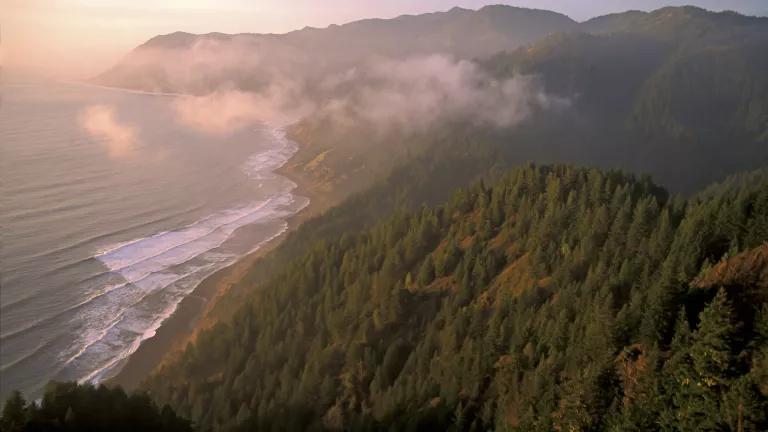
Winter-run Chinook salmon below Keswick Dam 2021
NRDC and our partners today petitioned the State Water Resources Control Board to reconsider and set aside its June 10, 2021 approval of the Bureau of Reclamation’s Temperature Management Plan for Shasta Dam last month. Since March, we have been warning that the State Water Board needed to take action to prevent a disaster for salmon below Shasta Dam, to no avail. This week, staff from the California Department of Fish and Wildlife has joined that chorus, warning that Shasta Dam is likely to run out of cold water earlier than expected under the Shasta Temperature Management Plan (which is required under the Trump BiOps and the SWRCB's Water Rights Order 90-5) and as a result the Bureau of Reclamation may kill nearly all of the endangered winter-run Chinook salmon that spawn in the river this year:
7-6-21- Continued hot weather above 100 degrees for periods in late May, early June and past two weeks continuously will lead to depletion of cold water pool in Shasta Lake sooner than modeled earlier in season. This hot weather is leading to more demand downstream for water (flows from Keswick from 8,500 to 9,250 on July 4th). Previously modeled season long cold water availability scenarios used steady flows in the 7500 cfs range from Keswick. Those earlier scenarios had very high expected juvenile mortality due to warm water later in Aug-Oct that would be lethal to incubating eggs and alevins in the gravel. This persistent heat dome over the West Coast will likely result in earlier loss of ability to provide cool water and subsequently it is possible that nearly all in-river juveniles will not survive this season. Counts of carcasses continue to indicate a large run of winter-run this year. Unspawned fresh females for the season are 71 with an overall percentage of 12.3% of all fresh females this season were unspawned.
California Department of Fish and Wildlife, 2021 Winter-run Chinook Update File. (emphasis added) [click on the "Discussion" tab of this Excel Spreadsheet]
It’s not at all surprising that the Shasta Temperature Management Plan failed this year. This was an easily foreseeable disaster, and it is the result—as the State Water Board admitted in April —“of the overallocation of Project water during dry conditions.” This year, based on public information from DWR and USBR, the CVP and SWP are allocating more than 3.7 million acre feet of water this year to agribusinesses, more than three quarters of all the water being allocated by these water projects:
|
Total CVP & SWP Allocations |
Acre Feet |
Percentage |
|
Municipal & Industrial Contractors |
438,874 |
10% |
|
Agricultural Contractors |
3,706,338 |
83% |
Note: Numbers do not equal 100% due to CVP allocations of water to wildlife refuges (level 2)
As hot and dry conditions persist in California and across much of the West, the hard truth is that a lot of water is being diverted from the Bay-Delta watershed for agribusinesses in the Central Valley this year. Droughts have always been a fact of life of California, although climate change is making droughts more severe and more frequent. Yet even though we all know the next drought is around the corner and that we should prepare, in recent years it’s become clear that California wholly fails to plan for droughts because the State has not reduced the unsustainable and unreasonable amounts of water used by corporate agribusinesses in the Central Valley. When nature provides less water during droughts, the State’s approach is to take even more water from California’s overallocated rivers. The reality is that industrial agriculture in the Central Valley is unsustainable, and some land will have to be taken out of production to bring it into balance.
As a result of the overallocation of water to agribusinesses, this year salmon and other native fish and wildlife are being decimated and are at risk of extinction, urban residents in many parts of the State are being asked to conserve water, and hydropower production is declining and may stop completely at Oroville Dam because DWR and USBR are draining upstream reservoirs. In addition, the lack of water stored in upstream reservoirs at the end of this water year means that if 2022 is also dry, California is woefully unprepared to meet basic water needs in terms of health and human safety next year.
The State Water Board should act now to withdraw approval of the Shasta Temperature Management Plan and require DWR and Reclamation to reduce water allocations to these agribusinesses as part of a revised Shasta Temperature Management Plan, which would increase reservoir storage to improve conditions for fish and wildlife and which would ensure there’s more water in storage in case 2022 is also dry. And the Federal government needs to immediately begin the process of replacing the Trump Administration's biological opinions (the politically motivated plans for extinction that legalize killing 100% of these endangered salmon).



